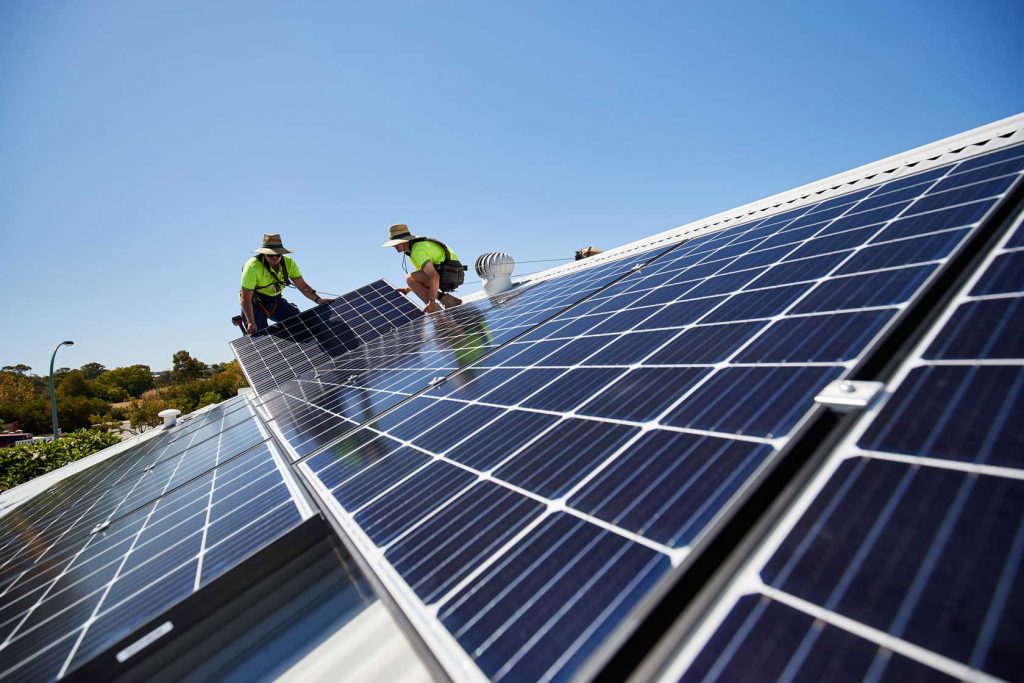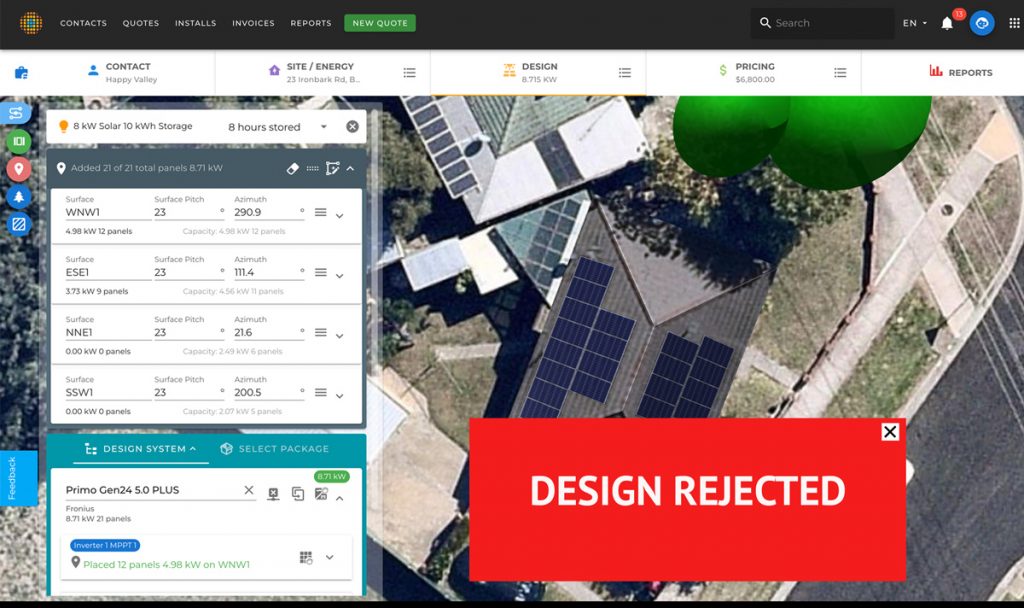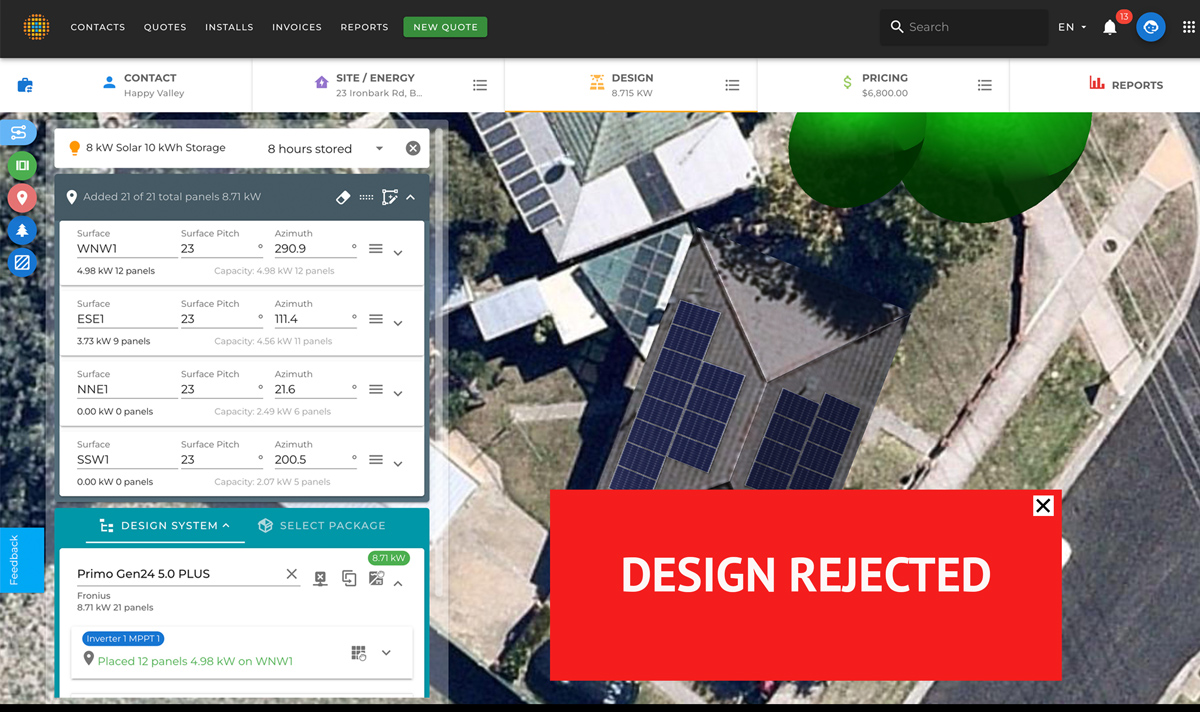Many consumers are more than a little baffled when a solar installer tries to explain why they have received several quotes for a 6.6 kilowatt solar system.
There might be some ‘That’s the biggest system we can install…( a few technical terms, mumble, mumble)…oversizing rule…(more jargon)…Clean Energy Council.’
In the era of the ‘smart grid’, IoT and AI, is smaller really smart?
There’s a bit to unpack about this ‘oversizing rule’. It is a design sizing limit imposed on installers and in a few cases may not apply.

Where did the sizing cap come from?
Part of the story is the limit placed on the amount of power that can be exported to the grid – a limit set by most of the country’s energy distribution companies. To make their lives easier, standard grid connection applications are accepted by the distributors only where a 5 kW export limit (or 15 kW for 3-phase) is controlled by the installed inverter. Anyone wanting a higher export limit faces a challenging application process.
That limit was drawn up at a time when most distributors were fighting hard to limit the surge in interest in solar and it created challenges for them to upgrade and adapt to supporting a two-way grid. The flexible grid of the future was coming towards them far too quickly for their liking and, well, we’re left with this hard limit.
So many domestic inverters come with a 5 kW AC output limit. This leaves little incentive for manufacturers to innovate for better consumer solutions and many manufacturers don’t bother to enter the market in Australia due to the burdens of our regulatory environment. But that’s a longer story.
OK, I’m limited to 5 kW export but aren’t I master of my own domain?
We can connect more solar panels with more power output to the DC (input side) of that 5 kW inverter and there are many great reasons to want to do so:
-
- you may not have a good north facing roof and so need to get as many panels as possible onto an east and/or west-facing roof;
-
- putting panels on east and west orientation is often a better result if you want to get maximum solar to meet your needs early or late in the day, when charges may be at their highest. Extra panels may be helping to meet the power needs of those late afternoon air-conditioning, heating or teenager gaming machines;
- you live in southern parts of Australia with much lower energy generated per kilowatt of solar
-
- you may want to have excess power to get a home battery system charged up, or get battery-ready, to reduce your costs in the expensive evening tariff period.
But here is where the oversizing rule comes in. The oversizing rule says that the solar panel DC system size must be no more than 133% bigger than the AC output of the inverter.
This rule is enforced by the Clean Energy Council, a non-government industry body who do a lot of good stuff, but who have introduced many extra requirements for installers in addition to the raft of Australian Standards that installers must conform to.
Aussie homeowners, being independent and keen to maximum the advantage of our great solar resource, and to mitigate the effect of ever-increasing electricity bills, will of course want to maximise the potential of their rooftop.
But they may be sorely disappointed to hear that their choices are limited.

Why is 133% mandated?
So why did this happen? Let’s go back to 2008. Glen Morris sat on the committee that deliberated on an oversizing rule.
“This began as an exercise to suggest a helpful solar design oversizing rule, a rule of thumb. The Clean Energy Council picked it up for addition to their somewhat inappropriately named, ‘Design Guidelines’.
“Before we knew it, it went from a recommendation to a requirement that, if not followed, meant the home or business owner would lose the Clean Energy Target incentive (aka STCs) and pay a significantly higher price.
“At the time it raised eyebrows, but since most systems were just a couple of kilowatts in size, didn’t have much material impact.
“That’s no longer the case as we’ve moved on to an urgent need to reduce the fossil fuel reliance of our grid, and therefore maximising rooftop solar can only be beneficial.”
So, what would happen if this rule didn’t exist, like throughout the rest of the world?
Inverter manufacturers already provide specifications for what design conditions are allowable, including oversizing limits, while still maintaining their product warranty.
Installers already have these design sizing limits to protect equipment and protect homeowners. Software platforms like SolarPlus provide a high level of design guidance including warnings when sizing limits are exceeded.
The requirements in Australian Standards are extensive and have been developed and refined over many years to provide a high degree of safety compliance.
Australian solar installers are overloaded with some of the highest compliance requirements in the world, making administration a high cost for many smaller, locally owned businesses.
If we’re to move quickly to decarbonise the grid, there is no room for excess compliance load or bureaucratic overreach. The CEC and government departments should be doing all they can to clear the way for efficiency and freedom for good design choices by qualified professionals.
How to help shift this roadblock
There’s no incentive for those rules to be revoked of course, unless pressure comes from within the industry, by consumers, and the media.
This rule is outdated, needlessly restrictive for both qualified solar designers and consumers, and serves no good purpose.
So, let’s apply some leverage and ask the question: Why are the Clean Energy Council, an industry representative body, adding to the compliance burden when we have totally adequate Australian Standards for all levels of solar design and installation?
Kane Thornton, leave regulation to the Australian Standards and let’s make clean energy more accessible, not less.


